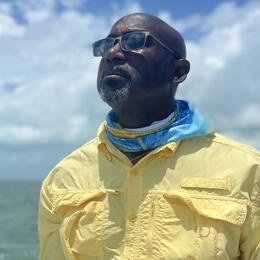Critics claim, erroneously, that the sparrow is an impediment to Everglades restoration and moving water south from Lake Okeechobee through the Central Everglades to Everglades National Park and Florida Bay. The reality is a bird of a different feather.
The Cape Sable Seaside Sparrow is a non-migratory bird with an extremely limited range that calls the Florida Everglades home. The sparrow prefers the short hydro-period mixed marl prairies in and around Shark River Slough and Taylor Slough for nesting habitat, and six distinct sparrow subpopulations — labeled A through F — have been identified across the Central and Southern Everglades. According to the U.S. Fish and Wildlife Service, subpopulations B through F are “stable or increasing.” But numbers in subpopulation A, which is located along the northwest portion of Shark River Slough and to the south of Water Conservation Area 3A (WCA 3A), have continued to decline. (2)
The sparrow was listed as endangered in 1967 due to its limited range and habitat threats caused by drainage of the Everglades south of Lake Okeechobee, mainly for agriculture and flood control, as part of the Central and South Florida Project (C&SF Project). C&SF system limitations and water management operations constrain water flows out of WCA 3A which, when combined with the billions of gallons of water from Everglades Agricultural Area (EAA) runoff, results in WCA 3A water levels that are too deep. In order to keep sparrow subpopulation A habitat drier during nesting season, some water control structures are closed during parts of the year. Two of the structures (S-12A and S-12B) directly impact sparrow habitat, but have limited flow capacity and do little to reduce water levels in WCA 3A. Other structures with the capacity to impact water levels in WCA 3A without impacting sparrow habitat, such as the newly constructed S-333N, remain closed. Even so, the sparrow gets blamed when water levels in WCA-3A are higher than desired.
The sparrow didn’t create the conditions that threaten its existence. Human efforts to drain the Everglades to create the EAA, provide for flood control, and foster urban development altered the natural volume, timing, and flow of water to the Park and Florida Bay. The Comprehensive Everglades Restoration Plan and restoring historic flows to Northeast Shark River and Taylor Sloughs are the remedies for the Everglades and the sparrow, but restoration has suffered from numerous delays since being approved in 2000.
Blaming the Cape Sable Seaside Sparrow won’t reduce water levels in WCA 3A or ensure its continued existence. Accelerating restoration and improving water management operations will.
(2) Letter dated September 16, 2020 from Aurelia Skipwith, Director, US Fish and Wildlife Service, to The Honorable Billy Cypress, Chairman, Miccosukee Tribe of Indians of Florida.
Read the full State of the Evergladea report here.





